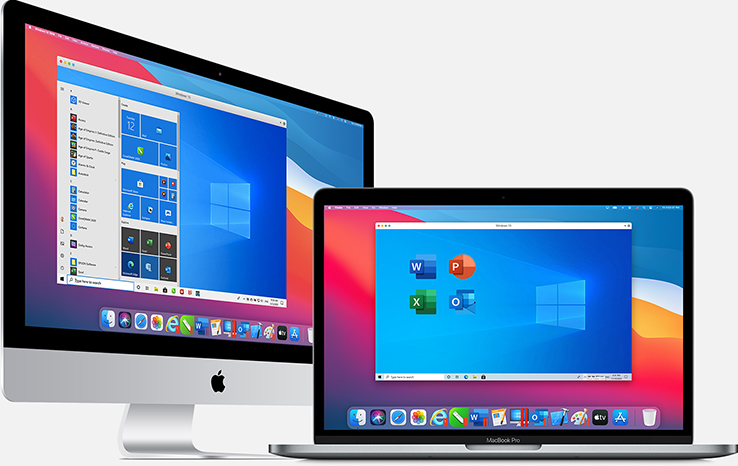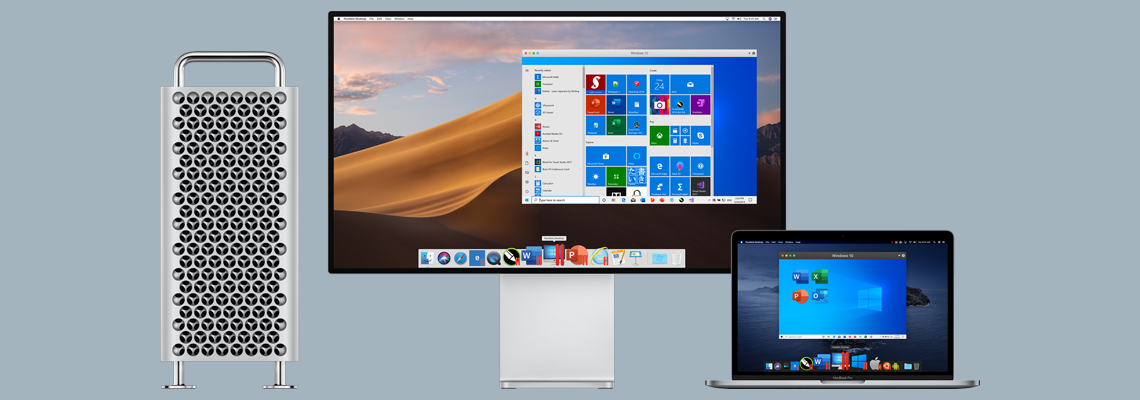Using Parallels to run AccountEdge on 10.15 Catalina


MacOS 10.15 Catalina, macOS 10.14 Mojave, macOS 10.13 High Sierra or macOS 10.12 Sierra. DirectX 11 requires at least macOS Mojave 10.14; Parallels Desktop 15 for Mac is the fastest, easiest and most powerful application for running Windows on Mac—without rebooting. Optimized for the latest Windows 10 updates and macOS Catalina (10.15). Designed with developers, power users, and other demanding professionals in mind. Parallels Desktop for Mac Pro Edition gives you more processing power, with up to 128 GB of virtual RAM allocated to your VM and up to 32 virtual CPUs. Premium 24/7 phone and email support. Parallels Desktop is a powerful virtualization software specially designed for macOS. It runs fast and smooth on my Hackintosh. You may want to take a look at how to install Parallels Desktop on macOS Catalina. In order to install and run macOS Catalina on your macOS, you will need to download the update of macOS Catalina. MacOS 10.15 Catalina, macOS 10.14 Mojave, macOS 10.13 High Sierra or macOS 10.12 Sierra. DirectX 11 requires at least macOS Mojave 10.14 Parallels Desktop 16 for Mac is the fastest, easiest and most powerful application for running Windows on Mac—without rebooting. Parallels Desktop 15 for Mac fully supports all macOS 10.15 Catalina security requirements. After you install Parallels Desktop, it asks your permission to access some of your folders and explains why access is required.
What is Parallels?
Parallels creates a virtual machine inside your current Mac’s hard drive. Within that virtual machine, you can install a Mac or Windows operating system giving you access to run multiple operating systems at the same time.
Virtual machines allow you to run an operating system in an app window on your desktop that behaves like a full, separate computer. Since AccountEdge will not currently run on Catalina, Parallels will let you install an older macOS on your computer in order to continue to use AccountEdge even if you have already or need to upgrade to Catalina.
Parallels for Desktop 15 is the only version of Parallels that is compatible with MacOS 10.15 Catalina.
For more information on Parallels or to obtain a list of features, please visit http://www.Parallels.com
Parallels Desktop Os X Catalina
Installing a macOS on Parallels (on a computer not yet upgraded to Catalina)
To obtain a macOS installation, the easiest method is to download Parallels prior to updating your macOS to 10.15 - Catalina. You can download the macOS from the App Store or use Parallels Desktop for Mac, which contains free systems that can be installed to create a virtual machine. If you’re on a macOS prior to Catalina, the “Install macOS” method “Using the Recovery Partition” will install your recovery macOS.
Installing a macOS on Parallels (on a computer already upgraded to Catalina)
If you have already updated your macOS to 10.15-Catalina, or purchased a new Mac with macOS 10.15-Catalina, the Recovery Partition method will install macOS 10.15- Catalina on your virtual machine. Instead of using this method, you will need to obtain the installation file for a pre-Catalina macOS.
The article below outlines ways to find and download older versions of macOS.
http://www.macworld.co.uk/how-to/mac-software/download-old-os-x-3629363
After obtaining the installation file use the “Install windows or another OS from a DVD or image file”.
Creating your virtual machine using an installation file.
- Launch Parallels Desktop for Mac.
- The “Create New” window should be showing upon launching Parallels Desktop for the first time. If it the window is not showing you can use the Parallels Desktop menu bar to click “File - New “.
- Select “Install Windows or another OS from a DVD or image file.”
- If the macOS installation is not found you may need to manually locate it through the installation wizard’s “Select File”.
- Follow the installation to complete the virtual machine.
We recommend that you take a few minutes to watch the video below, which details the process of creating a virtual macOS machine using Parallels Desktop for Mac.
The following video is for AccountEdge Network Edition users.

We recommend that you keep your AccountEdge file saved locally on your Mac (within the Catalina macOS) and not within the virtual machine. Please make sure you’re creating frequent backups and saving them locally. Parallels Desktop for Mac can share data between your Mac and your Virtual Machine. New Parallels users receive Premium 24/7 phone and email support for 30 days from Parallels. For information on sharing, configuration and best practices we recommend taking advantage of your Premium support.
Registration
Deactivating the license (Machine ID) frees up AccountEdge to be registered on the Virtual Machine.
On a computer not yet upgraded to Catalina:

- To deactivate the license on AccountEdge Pro/Basic/AccountEdge NE for Mac: Click 'AccountEdge' at the top menu bar and select 'Registration' in the drop down. From there you'll see the option to deactivate the license.
If you have already installed Catalina
Parallels Desktop Install Catalina
- You can contact support for assistance with deactivating the license.
Once AccountEdge has been deactivated on your machine the license will be available so you can register on the Virtual Machine.
